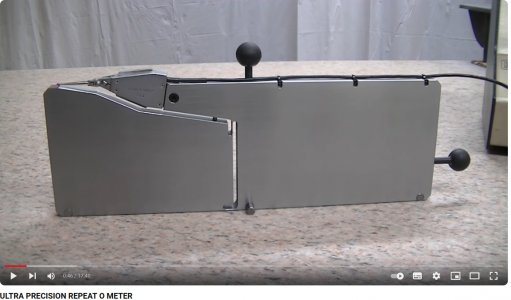- Joined
- May 27, 2016
- Messages
- 3,479
For me, and maybe most of us, getting things to better than about 25 microns (0.001") is all we need. Pushing the limit of my skill, then 10 or 12 microns (about 5 tenths) can be done. I do have a tenths dial gauge, but a 5-tenths type, commonly 0.01 mm is much more convenient.
I don't know how good is my freebie granite surface. I just have have to trust. Similarly with the only straight edge I have, which is longer and wider than I need. You have to bring stuff to it. It sits on its Bessel support points, and is a bit corroded at one end for the first 50mm or so, but I can see the scrape marks, so again I trust.
Now I find Gena Bazarko, Ukrainian I think, who has a method to find out the surface plate profile, AND the straight edge profile, even if both are not very flat /straight. The thing is, he gets it to microns, or even sub micron accuracy. OK - he uses a mikrokator, (also called Abramson's movement), with insane capability of 1 micron per division. Forty millionths is nothing like what I need, but it is the method that is interesting. Basically sweep the plate under the straight edge, then from underneath, the straight edge itself, placed upside down on blocks, then turned over and done again, from the top - plus some spreadsheet math. The method likely takes some patience and dedication to metrology. It looks like it is a bit of an effort!
This trick should work, even with "regular" dial gauges instead of mikrokators, if you don't need 1 micron accuracy.
I don't know how good is my freebie granite surface. I just have have to trust. Similarly with the only straight edge I have, which is longer and wider than I need. You have to bring stuff to it. It sits on its Bessel support points, and is a bit corroded at one end for the first 50mm or so, but I can see the scrape marks, so again I trust.
Now I find Gena Bazarko, Ukrainian I think, who has a method to find out the surface plate profile, AND the straight edge profile, even if both are not very flat /straight. The thing is, he gets it to microns, or even sub micron accuracy. OK - he uses a mikrokator, (also called Abramson's movement), with insane capability of 1 micron per division. Forty millionths is nothing like what I need, but it is the method that is interesting. Basically sweep the plate under the straight edge, then from underneath, the straight edge itself, placed upside down on blocks, then turned over and done again, from the top - plus some spreadsheet math. The method likely takes some patience and dedication to metrology. It looks like it is a bit of an effort!
This trick should work, even with "regular" dial gauges instead of mikrokators, if you don't need 1 micron accuracy.
Last edited:

